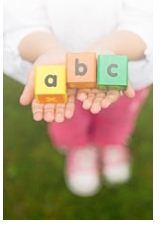Worth Repeating: Social Skills Fuel Language Acquisition

by: Meredith Meyer, Ph.D. and Dare Baldwin, Ph.D., Department of Psychology, University of Oregon
Introduction
From the instant infants greet the world, they are immersed in a rich social environment constructed and shaped by their parents, caregivers, siblings, and others. Language is one key medium through which social and cultural exchanges occur. Infants and children are exposed to meaning-relevant communication through face-to-face interaction as well as through observation of others’ language use, and this communication is crucial for development of interpersonal understanding as well as learning about the world in general. Social processes fuel children’s language acquisition, and the social bases underlying language acquisition are a central piece of the puzzle when investigating the acquisition process. We turn now to three specific questions shaping research regarding the social underpinnings of language acquisition.
Research Questions
- In what ways are language-acquiring infants and children tuned in to social interaction, and how do adults construct and modify these interactions?
- How does infants’ and children’s social understanding aid language acquisition?
- How can parents or caregivers best promote language learning through the social input they provide to children?
In what ways are language-acquiring infants and children tuned in to social interaction, and how do adults construct and modify these interactions?
Human infants display a remarkable sensitivity to social input in the form of language. Even in utero, infants are capable of learning something about the speech that surrounds them. In a now-classic study, DeCasper and Spence (1986) asked expectant mothers to read one of two simple rhyming passages during the third trimester. When the babies were born, these newborns changed their sucking rate as long as this behavior was rewarded by presentation of the passage that their mothers had read previously. Newborn infants also modify sucking rates to hear their own mother’s voice and to hear speech in their native language (DeCasper & Fifer, 1980; Moon, Cooper, & Fifer, 1993). Infants also discriminate between actual speech and speech-like sounds matched in length and complexity, preferring to listen to speech over non-speech analogs (Vouloumanos & Werker, 2004, 2007).
Read the Rest of this Article on The Encyclopedia of Language and Literacy Development
PediaStaff is Hiring!
All JobsPediaStaff hires pediatric and school-based professionals nationwide for contract assignments of 2 to 12 months. We also help clinics, hospitals, schools, and home health agencies to find and hire these professionals directly. We work with Speech-Language Pathologists, Occupational and Physical Therapists, School Psychologists, and others in pediatric therapy and education.
